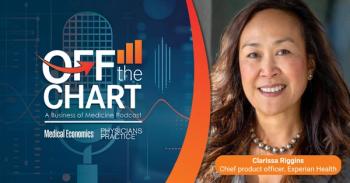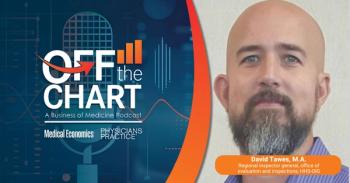
IdeaLab: Cash-only Healthcare Still Works
Family physician Brian Forrest on how his cash-only practice works for him and his patients.
I’m often asked how I can afford to keep charges so low at my primary-care practice. The answer is simple. Only the administration of primary care is expensive, not its provision, so I keep charges low - for example, I can take care of a chronically ill, hypertensive, hyperlipidemic, diabetic patient for $25 per month and $20 per visit - by refusing to deal with healthcare’s primary creators of administrative costs: insurance companies. My overhead is low, so my services are cheap, which makes it possible for middle- and low-income families (including some who are insured, and others who are not) to afford me.
You might remember me from the June 2007 issue of Physicians Practice, when I first told you about my practice, Access Healthcare in Apex, N.C. (Read the original article “
I still get a lot of questions about how it’s possible for me to run a cash-only practice in a middle-class town. (Apex is a suburb of Raleigh, where median household income is about $71,000 and median home value is $208,000; those figures are above-average for the state, but hardly wealthy.) I thought it would be useful to tell you how things have been going in the last 14 months.
One fast-growing aspect of my practice is the “Access Card” discount plan. The idea is simple: Patients pay $300 a year for a card and $20 per office visit, which includes labs and any in-office testing. This means that a typical patient who comes in for a complete physical, four follow-up office visits with lab work, and a sick-visit will spend $420 for a year’s worth of primary care.
Compare that to the average $700 that Americans are spending yearly just for health insurance premiums ($3,300 per family), which does not include copays, deductibles, or employers’ contributions. Something does not add up. Primary care is the most cost-effective way to keep people healthy, yet most healthcare dollars do not go to the average primary-care physician.
Many physicians are skeptical of my Access Card program. They say, “Don’t you lose money on that?” On the contrary, I do quite nicely. Consider a typical primary-care physician with a modest panel of 2,000 patients. Now suppose each of those patients paid $300 a year for the physician’s services. That comes to $600,000 a year in revenue before the first office visit is made. If your overhead is low (like mine, at 25 percent), you would clear $450,000 per year. That’s a lot more money than the average primary-care physician makes.
Our overhead is exceptionally low because we do not file insurance and only have one staff person for every two providers. But even if your overhead is 60 percent, you would still make $240,000 per year if you had 2,000 patients each paying you $300 a year. We accomplish this with no billing, no accounts receivable, and it only costs our patients $25 per month, a real deal in terms of out-of-pocket healthcare expenses.
You might be thinking that only uninsured patients would come to see me, to gain access to affordable primary care. Why, you might ask, would insured patients pay me $300 on top of their own insurance premiums? In fact, about 42 percent of my patients have traditional insurance through their employers; another 10 percent are on Medicare. They see me anyway, because my $20 per visit fee is slightly less than their in-network copay, and it often includes lab tests that their copay does not cover, so they still save money.
About 30 percent of my patients are uninsured. Another 15 percent don’t have conventional insurance but have heeded my advice to purchase high-deductible, low-premium plans with health savings accounts to cover any unforeseen hospitalizations or catastrophic costs. What they save in premiums with this type of insurance plan generally more than makes up for their Access Card fee, and they actually spend a lot less out-of-pocket in a year than if they bought a traditional PPO plan with a copay.
Mine is not a “boutique” or “concierge” model. Those titles belong to practices that charge exorbitant fees to provide special service for the wealthiest patients. Nor is my Access Card program insurance. It is important to point out to patients that it is just a prepaid discount and does not give them any medical benefits other than decreased fees at our office.
Our model is expanding quickly. Over the last year, I have helped more than 20 healthcare providers around the country in their efforts to go cash-only. My goal is to continue to free healthcare providers from the shackles placed on them by managed care, which I believe will improve care for patients. As I tell my patients, their healthcare is between them and me. It is very liberating to have the unwelcome third party out of the physician-patient relationship.
I have also offered an Access Card program to local employers. Self-insured employers’ premiums are affected by utilization. If they use Access Cards for their primary care, then that decreases utilization (since it is not billed to insurance). What the employer saves in premiums more than covers the $25 per-employee per-month fee.
Employees that normally have a $25 to $35 office copay actually save money by only paying $20 at our office. One of the companies that we have offered this to has about 500 employees, and stands to save enormous amounts of money. This type of direct-provider contracting bypasses the insurance company and cuts out the middleman. The employees still have their insurance if they are hospitalized or have surgery, or incur other large costs not covered by the Access Card. But their primary-care cost is greatly reduced by having their employer pay the practice directly.
I am now considering opening some extended-hours clinics that will be flat-fee based so that patients have the ultimate in price transparency. I am considering calling this the $50 Clinic. That’s right, everything is $50. This would be the modern healthcare iteration of the retail concept of fixed-price stores. (You’ve heard of “dollar stores”?) This means that patients would know what to expect, and the costs for this type of after-hours access could be a bargain for those with and without insurance.
Perhaps in another year, I’ll let you know how that’s going.
Brian R. Forrest, MD, an adjunct assistant professor at UNC Chapel Hill, is the founder and president of Access Healthcare and a practicing family physician in Apex, N.C. He can be reached via editor@physicianspractice.com.
This article originally appeared in the July/August 2008 issue of Physicians Practice.
Newsletter
Optimize your practice with the Physicians Practice newsletter, offering management pearls, leadership tips, and business strategies tailored for practice administrators and physicians of any specialty.








